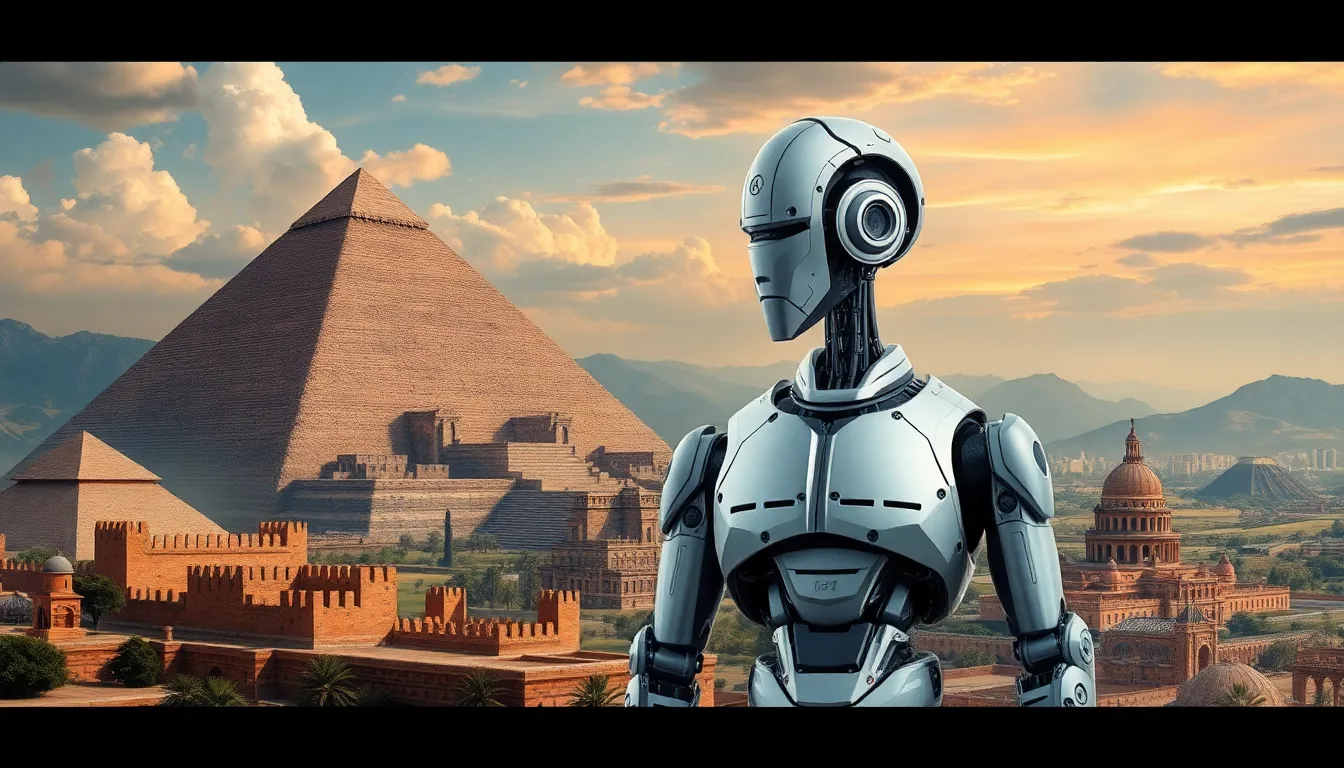Table of Contents
ToggleEngineering and robotics are the dynamic duo of the modern world, transforming sci-fi dreams into everyday realities. Imagine a world where machines do the heavy lifting while humans focus on creativity and innovation. Sounds like a plot twist straight out of a blockbuster, right? But it’s happening now, and it’s not just for tech geeks in lab coats.
Overview of Engineering and Robotics
Engineering and robotics significantly shape modern society. These fields blend creativity and technology to create solutions that enhance daily life.
Definition of Engineering
Engineering encompasses the application of science and mathematics to solve real-world problems. It covers various disciplines, such as civil, mechanical, and electrical engineering. Each discipline focuses on designing, building, and maintaining different systems and structures. Engineers analyze challenges to develop innovative solutions that improve safety and efficiency. With technology’s rapid advancement, engineering adapts to incorporate new techniques and tools. The discipline drives progress across sectors, including healthcare, transportation, and environmental sustainability.
Definition of Robotics
Robotics combines engineering, computer science, and artificial intelligence to design and create robots. Robots automate tasks previously reliant on human intervention, improving efficiency and precision. These machines perform tasks in various settings, from manufacturing to space exploration. Robotics includes subfields such as industrial robotics, service robotics, and medical robotics. Each subfield addresses specific needs and applications, transforming industries and enhancing productivity. The integration of sensors and AI enables robots to learn and adapt, increasing their capabilities and effectiveness.
Historical Development of Engineering and Robotics

The history of engineering and robotics reflects centuries of innovation and advancement. Both fields have evolved significantly, shaping the world in profound ways.
Early Innovations in Engineering
Ancient civilizations, like the Egyptians and Greeks, made monumental contributions to engineering. They constructed pyramids and aqueducts, showcasing principles of mathematics and physics. The invention of the wheel around 3500 BCE also marked a pivotal advancement in engineering practices. Romans furthered these innovations by developing concrete and constructing elaborate road systems. Techniques from these early periods laid foundational knowledge, influencing engineering disciplines for generations.
Milestones in Robotics
The concept of robotics emerged in ancient mythology. Automatons were depicted in stories from both Greek and Asian cultures. In 1956, George Devol created the first industrial robot, Unimate, revolutionizing manufacturing processes. The introduction of AI in the late 20th century led to robots capable of learning and decision-making. By 2002, the Roomba vacuum cleaner entered homes, representing a significant advancement in domestic robotics. Milestones in robotics continue to reshape industries, enhancing efficiency and productivity at unprecedented rates.
Applications of Engineering and Robotics
Engineering and robotics significantly enhance various sectors, driving innovation and efficiency. These applications not only optimize processes but also improve overall quality of life.
Industrial Automation
Industrial automation showcases robotics’ ability to streamline manufacturing processes. Robots perform tasks like assembly, welding, and packaging, creating safer working environments. These machines handle repetitive jobs, reducing human error and increasing production speed. For instance, production lines equipped with robotic arms can achieve outputs that far exceed manual labor alone. As a result, companies often see reduced costs and improved product quality. In 2021, over 3 million industrial robots were in operation worldwide. This rapidly growing sector demonstrates how engineering principles solve complex challenges in manufacturing.
Healthcare Robotics
Healthcare robotics transforms patient care and medical procedures. Robotic systems assist surgeons by providing enhanced precision during operations, leading to minimally invasive techniques and quicker recovery times. Examples include da Vinci Surgical System, which aids in complex surgeries, improving patient outcomes. Additionally, robotic exoskeletons have emerged, helping individuals with mobility impairments regain movement. These solutions often rely on advanced engineering and AI to adapt to patients’ specific needs. By continuously evolving, healthcare robotics not only streamlines processes but also enhances overall patient care efficiency.
Challenges in Engineering and Robotics
Engineering and robotics face several significant challenges as these fields continue to evolve.
Technical Limitations
Technical limitations pose a major obstacle in robotics. Hardware constraints restrict robots’ capabilities, often leading to reduced performance in complex tasks. Algorithms play a crucial role in robot operation; however, current algorithms may struggle with real-time decision-making in unpredictable environments. Sensor technology, while rapidly advancing, still cannot match human sensory perception. It falls short in interpreting nuanced signals, which often hinders robots’ effectiveness in fields like healthcare and service industries. Additionally, energy efficiency remains a key concern; many robots require substantial power, limiting their operational duration and adaptability.
Ethical Considerations
Ethical considerations gain prominence as engineering and robotics integrate into daily life. Decision-making processes in autonomous systems raise questions around accountability. Having robots make life-altering choices, particularly in healthcare or transportation, necessitates clear ethical guidelines. Privacy concerns also arise with the increasing use of surveillance robotics. Many fear data collection without consent could infringe on individual privacy rights. Job displacement due to automation invokes ethical debates about the balance between technological advancement and socioeconomic impacts. Stakeholders must prioritize dialogue on these issues to ensure ethical practices guide the development of engineering and robotics.
Future Trends in Engineering and Robotics
Engineering and robotics are on the brink of revolutionary changes, driven by innovative technologies and emerging practices. These trends promise to redefine industries and enhance human capabilities.
Advancements in AI and Machine Learning
AI and machine learning significantly impact engineering and robotics. Algorithms improve robots’ ability to learn from data, allowing them to perform tasks with increased autonomy. Enhanced machine learning techniques enable robots to make real-time decisions, improving efficiency in various applications. For instance, AI-driven automation is streamlining manufacturing processes and adapting to changes in production demands. Predictive maintenance powered by machine learning algorithms helps anticipate equipment failures, leading to reduced downtime and cost savings. Together, these advancements foster smarter robots, contributing to higher productivity and transforming industries.
The Role of Robotics in Sustainable Engineering
Robotics plays a crucial role in advancing sustainable engineering practices. Automation aids in the efficient use of resources, reducing waste and energy consumption in construction and manufacturing. Robots equipped with AI can optimize energy usage, resulting in lower carbon emissions during production. Moreover, robots support environmental monitoring by conducting tasks in hazardous locations, ensuring safety while gathering valuable data. In agriculture, robotics enhances precision farming, allowing for reduced pesticide usage and improved crop yields. These contributions highlight robotics’ potential in promoting sustainability and addressing global challenges.
The fields of engineering and robotics are reshaping the landscape of modern society. As machines take on more labor-intensive tasks, humans can focus on creativity and innovation. This shift is not just a distant dream but a reality that’s becoming increasingly accessible to everyone.
The integration of advanced technologies like AI is enhancing the capabilities of robots across various sectors. From healthcare to manufacturing, the impact is profound and far-reaching. While challenges remain, such as ethical considerations and technical limitations, the potential for positive change is immense.
Looking to the future, continued advancements promise to further enhance productivity and sustainability. As engineering and robotics evolve, they will play a crucial role in addressing global challenges and improving quality of life for all.






